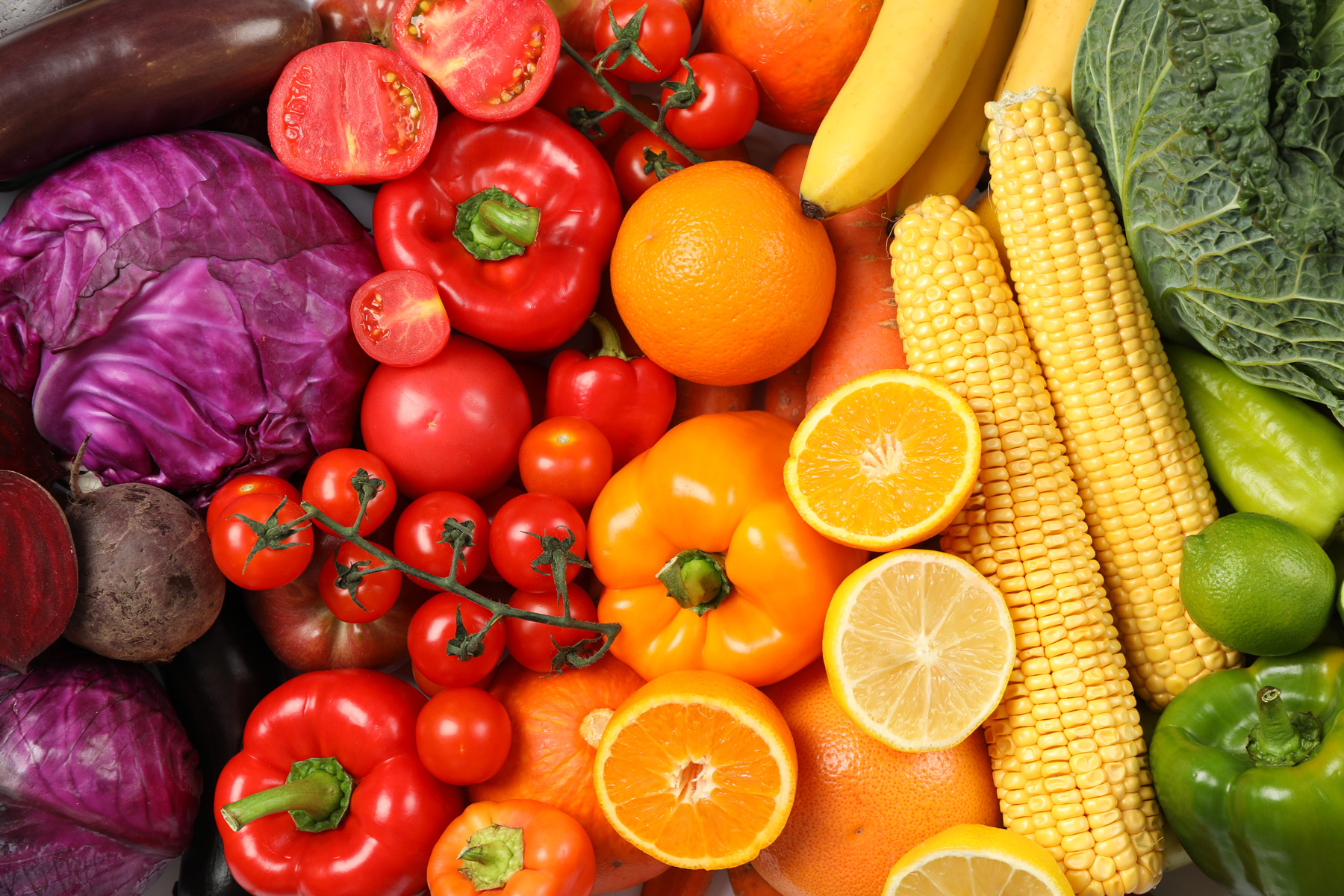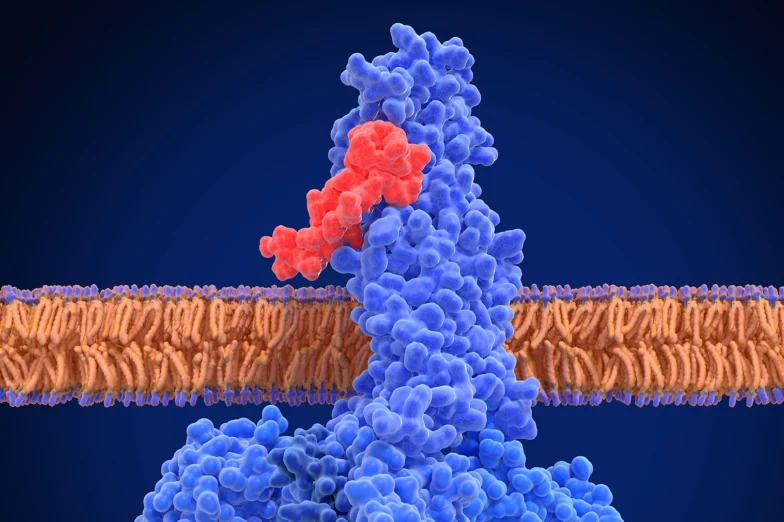Did you know that one of the simplest ways to improve your nutrition is by adding as many different colors as possible to your plate? Focusing especially on fruits and vegetables, this colorful approach ensures you’re getting a wide range of essential vitamins, micronutrients, and phytonutrients—some of which we’ll explore in more detail below.
When I talk with clients about eating more variety, I rarely discuss vitamins at first, but rather, I suggest they think in terms of color. By choosing food across the color spectrum, they will obtain the necessary nutrients without having to complicate themselves or overthink.
To make it easier for you to apply this concept, I’ve created a downloadable infographic with the key benefits by food color ¡perfect for keeping in your fridge or taking grocery shopping!
You can download it here.

Why Phytonutrients Matter: Color, Flavor, and Protection
The reason behind the different colors, aromas, and textures of fruits and vegetables and their outstanding nutritional contributions is phytonutrients. These are bioactive compounds generated from secondary plant metabolism in response to environmental changes. Phytonutrients also strengthen a plant’s immune system. Additionally, they function as attractants for pollination or protect against insect and pest attacks or exposure to various stresses, such as ultraviolet light. When human beings consume plant food, phytonutrients help protect us from chronic diseases and have anti-carcinogenic properties and cardioprotective effects.
Broadly speaking, the nutritional effects attributed to phytonutrients are based on two central actions:
- Antioxidant activity: They protect cells from oxidative damage by capturing free radicals, preventing them from catalyzing reactions such as the Fenton reaction. They also help prevent mitochondrial dysfunction, vascular damage, and endoplasmic reticulum stress—key factors in cardiovascular and neurodegenerative diseases.
- Anti-inflammatory activity: They help reduce inflammation by inhibiting molecules such as NF-κB, which are responsible for activating inflammatory genes, reducing the transcription of pro-inflammatory cytokine and enzyme genes, and limiting cell migration to damaged tissues.
Color Guide: Nutritional Benefits of Food by Colors
Red
Lycopene, a carotenoid found in foods like tomatoes, watermelon, and pink grapefruit, is recognized as a powerful antioxidant. It is effective in addressing various health issues such as cancer, diabetes, heart complications, oxidative stress, inflammatory conditions, as well as skin, bone, liver, neural, and reproductive disorders.
Additionally, there are potent antioxidants like anthocyanins, found in strawberries, raspberries, and red grapes, and other antioxidants in cherries and cranberries. Foods like red bell peppers, beets, strawberries, and tomatoes are rich in vitamin C, while beets and tomatoes provide vitamin A. These compounds have antioxidant properties and contribute to improving memory, digestion, and heart health. They also help lower blood pressure and possess anti-inflammatory effects.
Orange
Foods like sweet potatoes, pumpkins, and carrots contain beta-carotene, which the body converts into vitamin A (retinol). They also provide antioxidants, vitamin C, and folate (vitamin B9)—a nutrient in oranges that supports red blood cell formation and contributes to healthy cell growth and function.
In general, orange-colored fruits and vegetables support eye health, improve digestion, boost immunity, prevent cellular damage, and promote healthy mucous membranes.
Yellow
Yellow foods, such as bananas, peaches, and yellow peppers, are rich in vitamin C and folate, which support immune function, cell regeneration, and cardiovascular health. Additionally, pineapple contains bromelain, a natural digestive enzyme known for its therapeutic properties. Bromelain has been used to help treat conditions such as angina pectoris, bronchitis, sinusitis, surgical trauma, and thrombophlebitis. It also promotes wound healing and enhances the absorption of certain medications, especially antibiotics.
Yellow and orange fruits and vegetables often overlap in their nutritional benefits, as both are excellent sources of vitamin C, antioxidants, and carotenoids. Orange foods, in particular, are also known to improve brain function, aid digestion, and boost immune health.
Green
Green food, especially dark leafy greens, provides a wide range of antioxidants. Kale or Spinach includes vitamin A, while bok choy and broccoli provide vitamin K, which supports coagulation and bone health. Foods like edamame and avocados are rich in magnesium, and vegetables like kale, okra, and Spinach provide calcium. Additionally, nitrates in celery, lettuce, and Spinach play a key role in supporting heart health and mood regulation.
Lutein, found in asparagus, green peas, and zucchini, is essential for eye health due to its high concentration in the retina. It helps filter blue light and protects against oxidative stress. A deficiency in lutein can lead to early retinal degeneration and has been linked to severe visual impairments, underscoring its vital role in maintaining vision.
Green foods boost detoxification, help reduce oxidative stress, and improve the function of vital organs such as the brain, heart, and liver.
Blue/purple
Anthocyanins, found in blueberries, blackberries, and hibiscus, are potent antioxidants that help protect the body from oxidative stress and support heart health. Fiber and flavonoids in Lactarius indigo and purple cabbage promote digestive health and help regulate blood sugar levels. Vitamin B is found in elderberries, plums, and blackberries, supporting energy production and brain function. Vitamin C, E, and K. Additionally, calcium and phosphorus, crucial for bone health, can be found in blue corn, eggplant, and purple cabbage.
These nutrients collectively promote overall wellness by improving memory, enhancing immune function, supporting cardiovascular health and circulation, strengthening bones, and aiding digestion.
White
Foods like chickpeas and cauliflower are rich in Vitamin B. Quercetin, a powerful antioxidant, can be found in cauliflower, onions, and white potatoes. Selenium, present in garlic, cereals, and white grains, is a potent antioxidant. Sulfur in chickpeas and oats supports the body’s natural detoxification processes. Diindolylmethane (DIM), present in cauliflower, helps maintain hormonal balance by detoxifying estrogen.
These foods help reduce blood pressure, boost immunity, provide cellular protection and recovery, promote new cell growth, improve circulation, support detoxification, and may help lower blood sugar.
Black
Black foods such as black wild rice, black beans, and black lentils provide a range of essential nutrients. Protein found in black rice supports muscle repair and growth, while antioxidants and anthocyanins, present in these black grains, help protect cells from oxidative damage and reduce inflammation. Additionally, copper, found in black rice, plays a vital role in maintaining healthy bones and blood vessels and supporting immune function.
These foods also aid in detoxification, help balance cholesterol levels, and may contribute to the prevention of Alzheimer’s disease and diabetes.
Final thoughts
Eating by color is a simple and effective way to nourish body and mind. This approach supports everything from brain and heart health to digestion and immunity. You can learn more about it—and get practical tips to use this method with your clients—in my book, The Brainbow Blueprint.
Don’t forget to download the color-coded food infographic and keep these health benefits close at hand!
References
Imran, M., Ghorat, F., Ul-Haq, I., Ur-Rehman, H., Aslam, F., Heydari, M., Shariati, M. A., Okuskhanova, E., Yessimbekov, Z., Thiruvengadam, M., Hashempur, M. H., & Rebezov, M. (2020). Lycopene as a Natural Antioxidant Used to Prevent Human Health Disorders. Antioxidants (Basel, Switzerland), 9(8), 706. https://doi.org/10.3390/antiox9080706
Kijlstra, A., Tian, Y., Kelly, E. R., & Berendschot, T. T. (2012). Lutein: more than just a filter for blue light. Progress in retinal and eye research, 31(4), 303–315. https://doi.org/10.1016/j.preteyeres.2012.03.002
Pantalos, G., Vaou, N., Papachristidou, S., Stavropoulou, E., Tsigalou, C., Voidarou, C., & Bezirtzoglou, E. (2024). Antioxidant and Anti-Inflammatory Phytochemicals for the Treatment of Inflammatory Bowel Disease: A Systematic Review. Applied Sciences, 14(5), 2177. https://doi.org/10.3390/app14052177
Pavan, R., Jain, S., Shraddha, & Kumar, A. (2012). Properties and therapeutic application of bromelain: a review. Biotechnology research international, 2012, 976203. https://doi.org/10.1155/2012/976203
Rajoria, S., Suriano, R., Parmar, P. S., Wilson, Y. L., Megwalu, U., Moscatello, A., Bradlow, H. L., Sepkovic, D. W., Geliebter, J., Schantz, S. P., & Tiwari, R. K. (2011). 3,3′-diindolylmethane modulates estrogen metabolism in patients with thyroid proliferative disease: a pilot study. Thyroid : official journal of the American Thyroid Association, 21(3), 299–304. https://doi.org/10.1089/thy.2010.0245
Tufail, T., Fatima, S., Bader Ul Ain, H., Ikram, A., Noreen, S., Rebezov, M., Al-Farga, A., Saleh, R., & Shariati, M. A. (2025). Role of Phytonutrients in the Prevention and Treatment of Chronic Diseases: A Concrete Review. ACS omega, 10(13), 12724–12755. https://doi.org/10.1021/acsomega.4c02927
- Hyperbolic Tapering: What Every Clinician Should Know - November 3, 2025
- First Steps in Understanding Cognitive Decline: Causes, Screening, and Prevention - October 13, 2025
- GLP-1 Agonists: A New Frontier in Brain and Metabolic Health - September 17, 2025

Are You Ready to Advance Your Career?
If you want to advance your career in integrative medicine, explore my courses and certifications.












